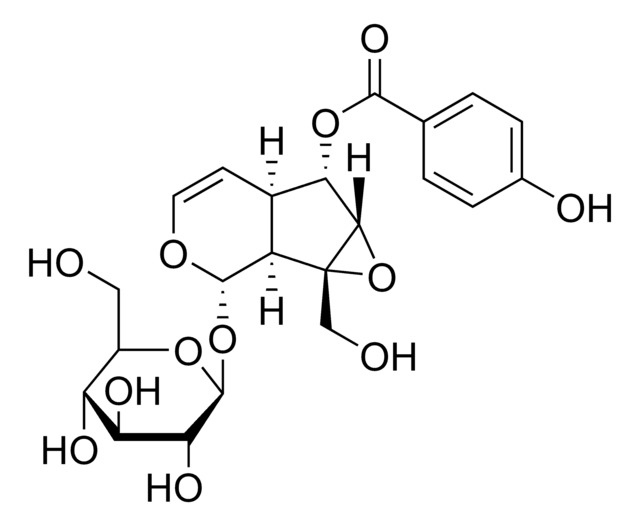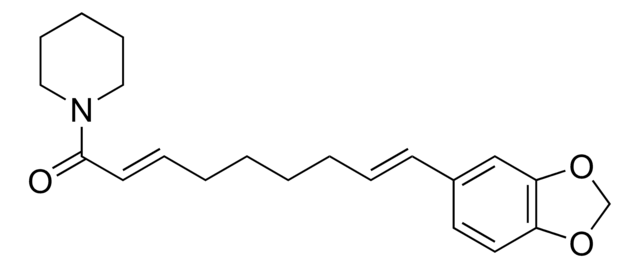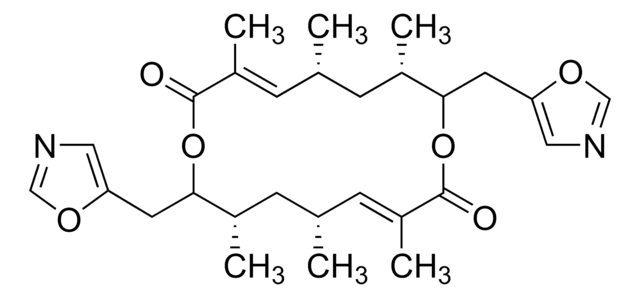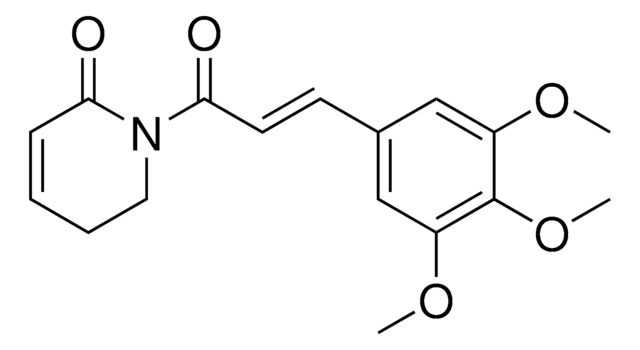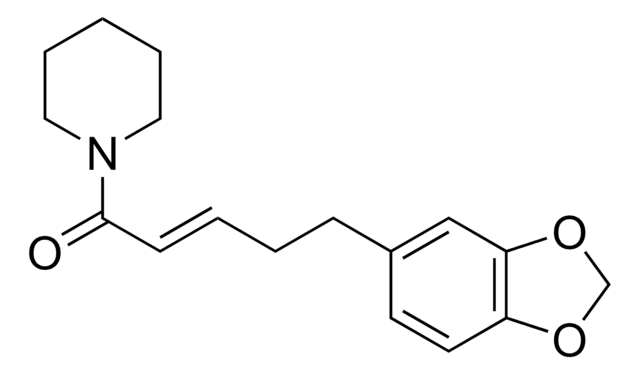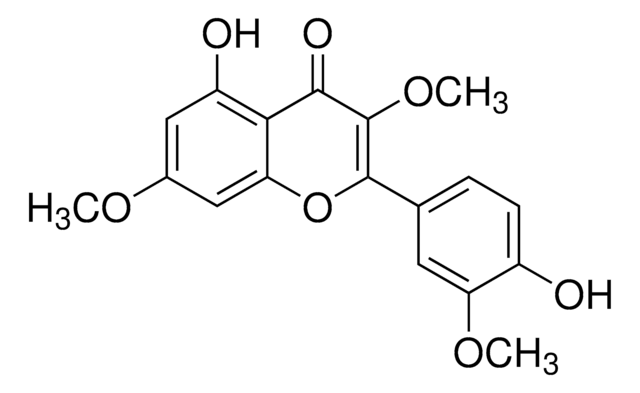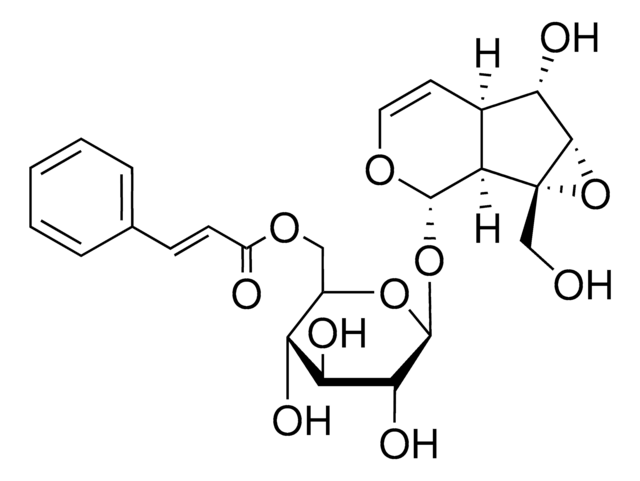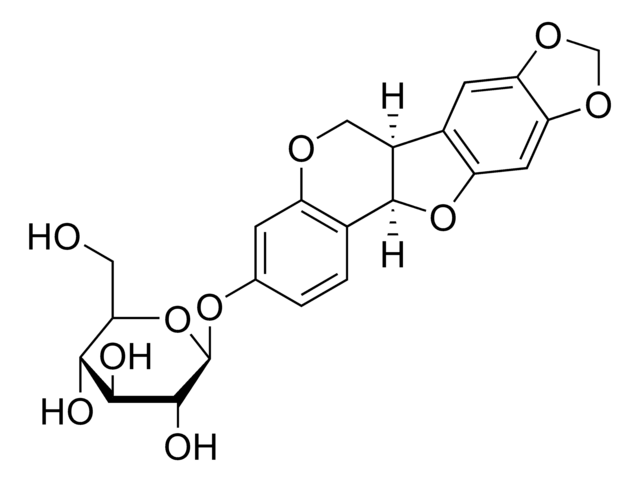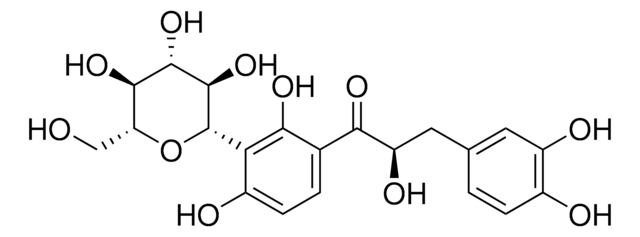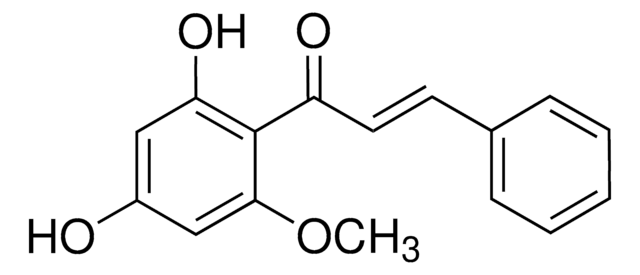SMB01055
Colladin
≥90% (LC/MS-ELSD)
Synonym(s):
Coladin
About This Item
Recommended Products
biological source
plant
Assay
≥90% (LC/MS-ELSD)
form
solid
mol wt
424.53
solubility
water: slightly soluble
application(s)
metabolomics
vitamins, nutraceuticals, and natural products
storage temp.
−20°C
SMILES string
O1c2c(ccc(c2)OC[C@H]3[C@]4([C@@H](C([C@@H](CC4)OC(=O)C)(C)C)CCC3=C)C)C=CC1=O
InChI
1S/C26H32O5/c1-16-6-10-22-25(3,4)23(30-17(2)27)12-13-26(22,5)20(16)15-29-19-9-7-18-8-11-24(28)31-21(18)14-19/h7-9,11,14,20,22-23H,1,6,10,12-13,15H2,2-5H3/t20-,22-,23-,26+/m1/s1
InChI key
MNGYOFNIAOWXIT-DNRBGDKYSA-N
General description
Application
Biochem/physiol Actions
Features and Benefits
- High quality compound suitable for multiple research applications
- Compatible with HPLC and mass spectrometry techniques
Other Notes
Storage Class Code
11 - Combustible Solids
WGK
WGK 3
Flash Point(F)
Not applicable
Flash Point(C)
Not applicable
Regulatory Information
Choose from one of the most recent versions:
Certificates of Analysis (COA)
It looks like we've run into a problem, but you can still download Certificates of Analysis from our Documents section.
If you need assistance, please contact Customer Support.
Already Own This Product?
Find documentation for the products that you have recently purchased in the Document Library.
Our team of scientists has experience in all areas of research including Life Science, Material Science, Chemical Synthesis, Chromatography, Analytical and many others.
Contact Technical Service